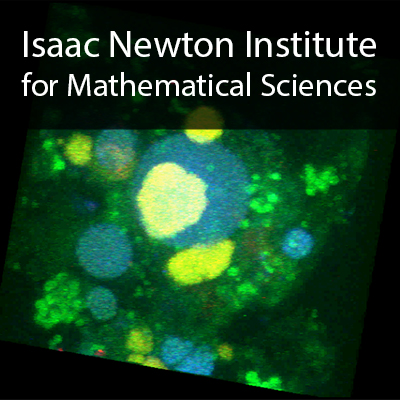Contributed Talk 1: Computational models of spatial behaviour of microbial communities
15 mins 52 secs,
84.89 MB,
WebM
640x360,
29.97 fps,
44100 Hz,
730.45 kbits/sec
Share this media item:
Embed this media item:
Embed this media item:
About this item

| Description: |
Kalvala, S (University of Warwick)
Wednesday 10 September 2014, 16:55-17:10 |
|---|
| Created: | 2014-09-15 14:01 |
|---|---|
| Collection: | Understanding Microbial Communities; Function, Structure and Dynamics |
| Publisher: | Isaac Newton Institute |
| Copyright: | Kalvala, S |
| Language: | eng (English) |
| Distribution: |
World
|
| Explicit content: | No |
| Aspect Ratio: | 16:9 |
| Screencast: | No |
| Bumper: | UCS Default |
| Trailer: | UCS Default |
| Abstract: | Computational simulations are now an important component of the toolkit for studying biological systems. While it is easy to simulate well-mixed solutions in order to model intra-cellular processes, it is more difficult to capture spatial phenomena characterizing microbial communities. The problem is compounded because we need to capture not only inter-cellular communication but also changing configurations, with microbes that move, change shape, and create new communication channels.
In this talk I will review some of the methodologies that have been developed for spatially-aware computational modelling of microbial communities and the limitations of these methodologies. I will also present some of our results in capturing some of the intriguing behaviour of myxobacteria communities (namely rippling and the formation of fruiting bodies) via a spatial simulation based on the Cellular Potts Model. |
|---|---|
Available Formats
| Format | Quality | Bitrate | Size | |||
|---|---|---|---|---|---|---|
| MPEG-4 Video | 640x360 | 1.94 Mbits/sec | 230.84 MB | View | Download | |
| WebM * | 640x360 | 730.45 kbits/sec | 84.89 MB | View | Download | |
| iPod Video | 480x270 | 521.96 kbits/sec | 60.59 MB | View | Download | |
| MP3 | 44100 Hz | 249.81 kbits/sec | 29.03 MB | Listen | Download | |
| Auto | (Allows browser to choose a format it supports) | |||||

